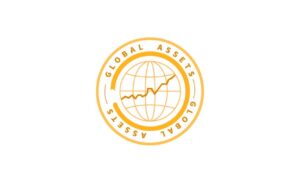Automated trading technology has rapidly emerged as a popular tool for traders and financial institutions. These technologies use algorithms and artificial intelligence to automate trades, execute transactions, and monitor market movements. While automated trading has brought many benefits, including increased speed and efficiency, there are also potential risks and ethical concerns associated with these technologies. The purpose of this article is to explore the ethics and regulation of automated trading technology and to examine the importance of responsible use of these tools in the financial industry. One example of an online automated trading platform is Bitcoin Code. Try now!
Ethics in Automated Trading Technology
Automated trading algorithms have the potential to perpetuate biases and inequalities in the financial industry. For example, these algorithms may inadvertently discriminate against certain groups or industries, such as women or minorities, if they are programmed with biased data or assumptions. Additionally, the use of automated trading technology may exacerbate existing inequalities by allowing large financial institutions with greater access to technology and resources to gain an unfair advantage over smaller players. To address these concerns, it is important for developers and users of automated trading technology to prioritize ethical considerations. This may involve conducting regular audits to identify and mitigate biases in algorithms, as well as implementing more diverse data sets and programming teams to ensure a broader range of perspectives. Ultimately, by taking a proactive approach to ethics in automated trading, financial institutions can help to mitigate the risks and negative impacts of these technologies and promote greater fairness and equality in the financial industry.
Regulatory Frameworks for Automated Trading Technology
Regulatory bodies play an important role in ensuring the responsible use of automated trading technology in the financial industry. However, developing regulatory frameworks for these technologies can be challenging due to their complexity and rapid evolution. In some cases, regulations may be outdated or insufficient to address the unique risks and ethical concerns associated with automated trading. To address this challenge, regulatory bodies may need to adopt more flexible and adaptable approaches to regulation, such as regulatory sandboxes that allow for the experimentation and testing of new technologies in a controlled environment. Additionally, regulatory bodies may need to work closely with industry stakeholders to better understand the potential risks and benefits of automated trading technology and to develop tailored regulatory frameworks that promote the responsible use of these technologies. Ultimately, effective regulation of automated trading technology is critical to ensuring the integrity and stability of financial markets, and to protecting the interests of investors and other market participants.
- The benefits of using automated trading software
- Automated Trading and Artificial Intelligence: Interview with Viet Anh Pham, the CEO and founder of Win FX
Case Studies: Ethical and Regulatory Issues in Automated Trading Technology
There have been several notable cases of ethical and regulatory issues arising from the use of automated trading technology in the financial industry. One such case involved the “flash crash” of May 6, 2010, in which automated trading algorithms triggered a sudden and severe drop in the stock market. This event highlighted the potential risks associated with automated trading, including the possibility of cascading effects and market instability. In response, regulators implemented new circuit-breaker mechanisms to halt trading in the event of significant market movements.
Another case involved the use of high-frequency trading (HFT) algorithms to gain an unfair advantage in the market. In some cases, HFT firms may engage in manipulative practices, such as spoofing or layering, which involve placing and then quickly cancelling orders to create a false impression of market demand. These practices have raised concerns about market manipulation and have led to increased regulatory scrutiny of HFT activities.
Finally, there have been cases of biases and discrimination perpetuated by automated trading algorithms. For example, in 2018, a study found that machine learning algorithms used by some banks and financial institutions were more likely to approve loans for men than women, even when controlling for factors such as income and credit history. These findings highlight the importance of ensuring that automated trading algorithms are developed and used in an ethical and responsible manner and underscore the need for regulatory frameworks that promote fairness and equality in the financial industry.
As automated trading technology continues to evolve and expand in the financial industry, the need for effective ethics and regulation will only grow more pressing. In the coming years, regulatory bodies will need to stay abreast of new technological developments and emerging ethical concerns and adapt their regulatory frameworks accordingly. This may involve greater collaboration with industry stakeholders, increased transparency and reporting requirements, and more proactive approaches to monitoring and enforcing ethical standards.
Conclusion
In conclusion, the use of automated trading technology has revolutionized the financial industry, providing investors with powerful tools for analyzing markets and making trades. However, this technology also poses significant ethical and regulatory challenges, including concerns about algorithmic bias, market manipulation, and the impact of technology on traditional trading practices.
Disclaimer: This is sponsored marketing content. The presented material by no means represents any financial advice or promotion. Be sure to do your research and acknowledge the possible risks before using the service of any trading platform.



































